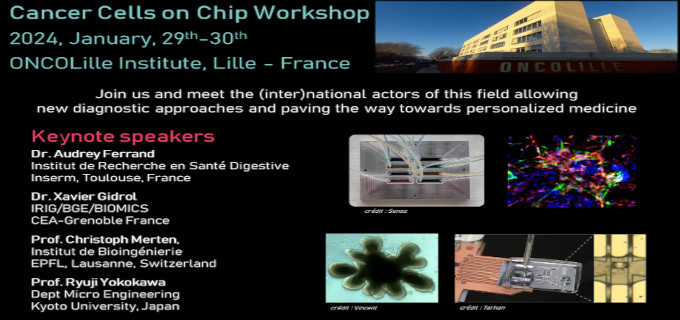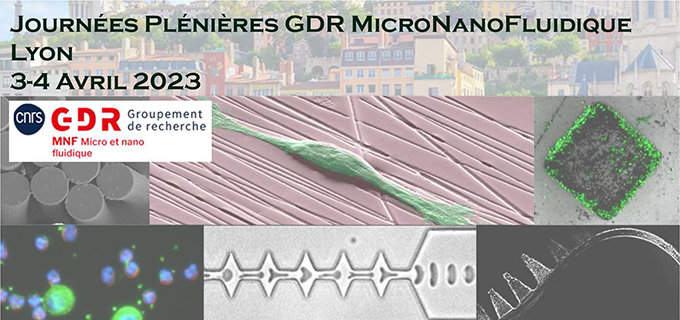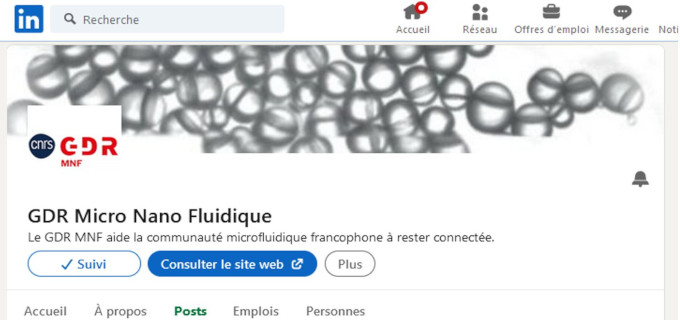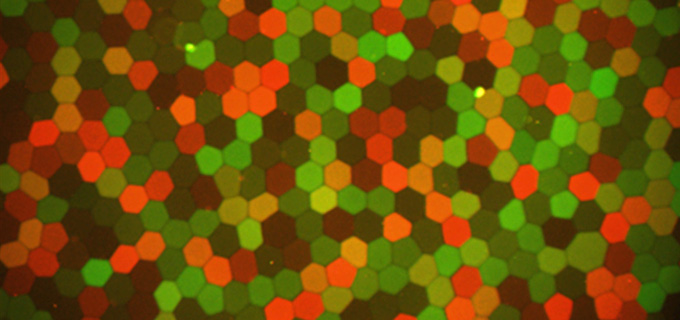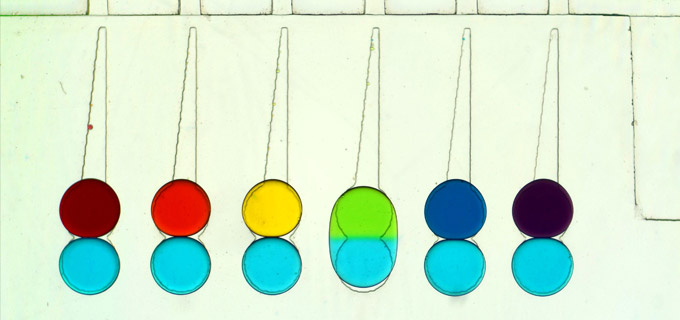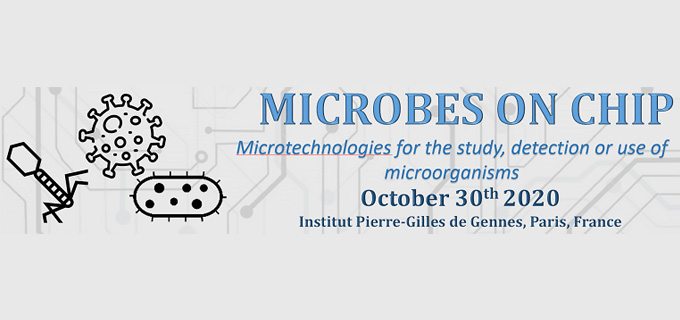Prix jeunes Scientifiques
En 2022, le GDR Micro et Nanofluidique MNF a décerné deux prix « jeunes scientifiques du domaine de la microfluidique ». En 2020, suite à la crise sanitaire limitant l’organisation d’événements, nous avions décerné un prix pour chacun des domaines du GDR. Pour les deux éditions, les lauréat.e.s avaient étéinvité.e.s à présenter leurs travaux par une présentation orale lors des journées plénières du GDR les 6-7 mai 2021 à Toulouse puis lors des journées 2023 à Lyon. Pour chaque édition, plus d’une vingtaine de candidatures ont été départagées par le comité de pilotage du GDR, en retenant les critères (non exhaustifs) : originalité, progrès conceptuel (en bio, physique, chimie…), développement technologique, application, innovation et transfert industriel.
Prix 2022
Lucie Descamps,
INL Lyon puis Eindovhen Univ
Conception of an immunomagnetic microfluidic device for the negative selection and characterization of Circulating Tumor Cells (CTCs),
Development of a droplet microfluidic platform for the dissection of cellular heterogeneity and communication at the single-cell level

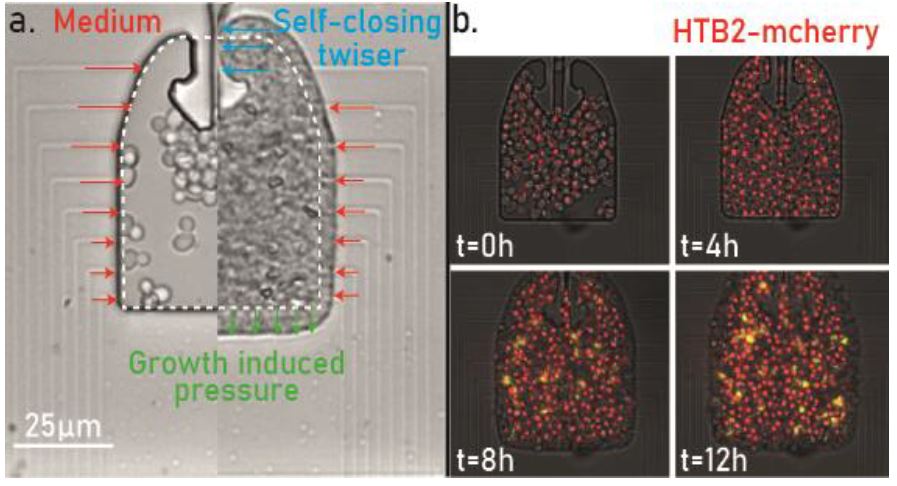
Baptiste Alric,
LAAS-CNRS, now in Limms, University ot Tokyon and CNRS
Impact des contraintes mécaniques sur la physiologie cellulaire
Prix 2020
• Nanofluidique, et énergie:
Nikita Kavokine,
ENS Paris.
Fluids at the nanoscale: from ionic correlations to quantum friction.
While macroscopic fluid mechanics is a well-established, two-century-old field, the fundamental understanding of fluids at the nanometer scale is still scarce. In a nanoscale channel, a fluid’s properties are determined exclusively by its interfaces. My research aims at understanding those properties by interfacing three areas of physics: hydrodynamics, statistical mechanics and condensed matter. A phenomenon I am particularly interested in is interaction confinement: when particles are confined in a very small channel, it is not only their spatial degrees of freedom, but also their interactions that are affected. For example, ions in very small channels interact much more strongly than in a bulk electrolyte. Those interactions result in correlations, that give rise to very non-linear, and even quantized transport, as well as memory effects that could allow to carry out elementary computations with ions. Most recently, I have been exploring the effect of interaction confinement on the fluid-solid interface, and the impact of electronic properties on solid-liquid friction.
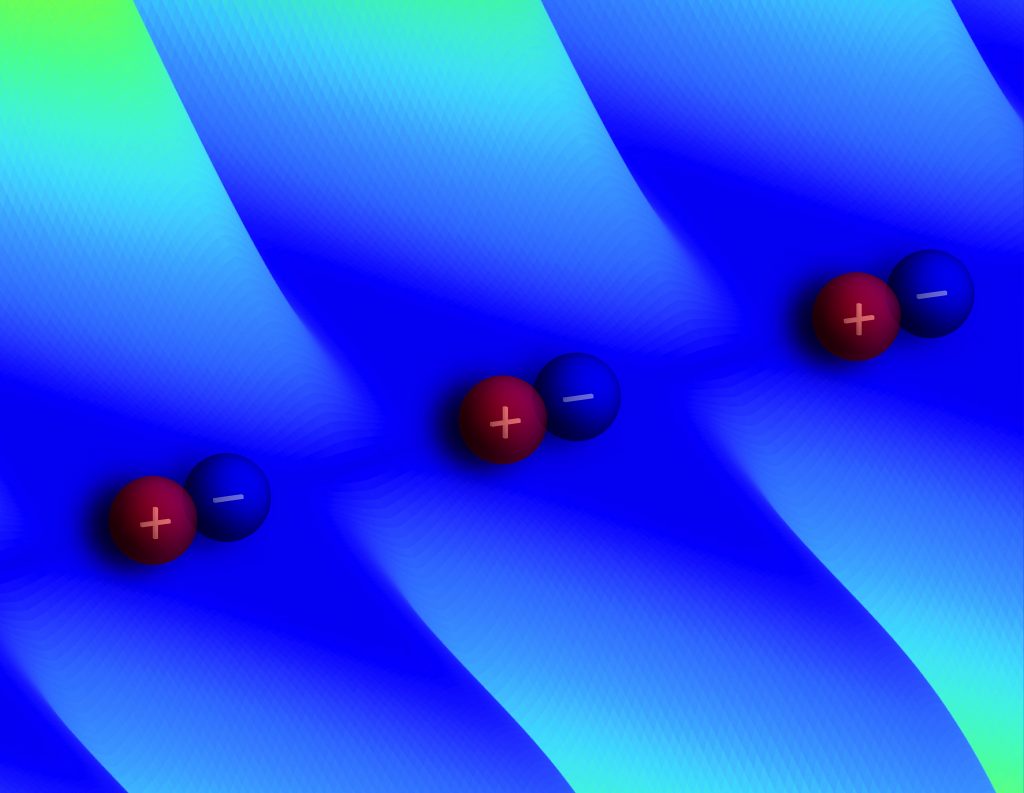
• Microfluidique pour le diagnostic et la clinique.
Lucile Alexandre,
Institut Curie / IPGG, Paris, et McGill University, Montréal, Canada.
Development of a platform for exosomes analysis from complex body fluid to couple intra- and extra-vesicle detection at a single/subpopulation particle level for noninvasive cancer diagnostics
Ce projet européen propose une approche interdisciplinaire, combinant microfluidique, chimie analytique et biologie, pour l’isolation et la caractérisation de vésicules extracellulaires, biomarqueurs prometteurs de nombreuses pathologies
• Organes-sur-puce / biologie cellulaire sur puce
Claire Amadio Dessalles
Ladhyx, Polytechnique
Micro vascular wall mechanics:
A flow-actuated microvessel-on-chip generates shear and strain by exploiting hydrogel poroelasticity
• Flow chemistry
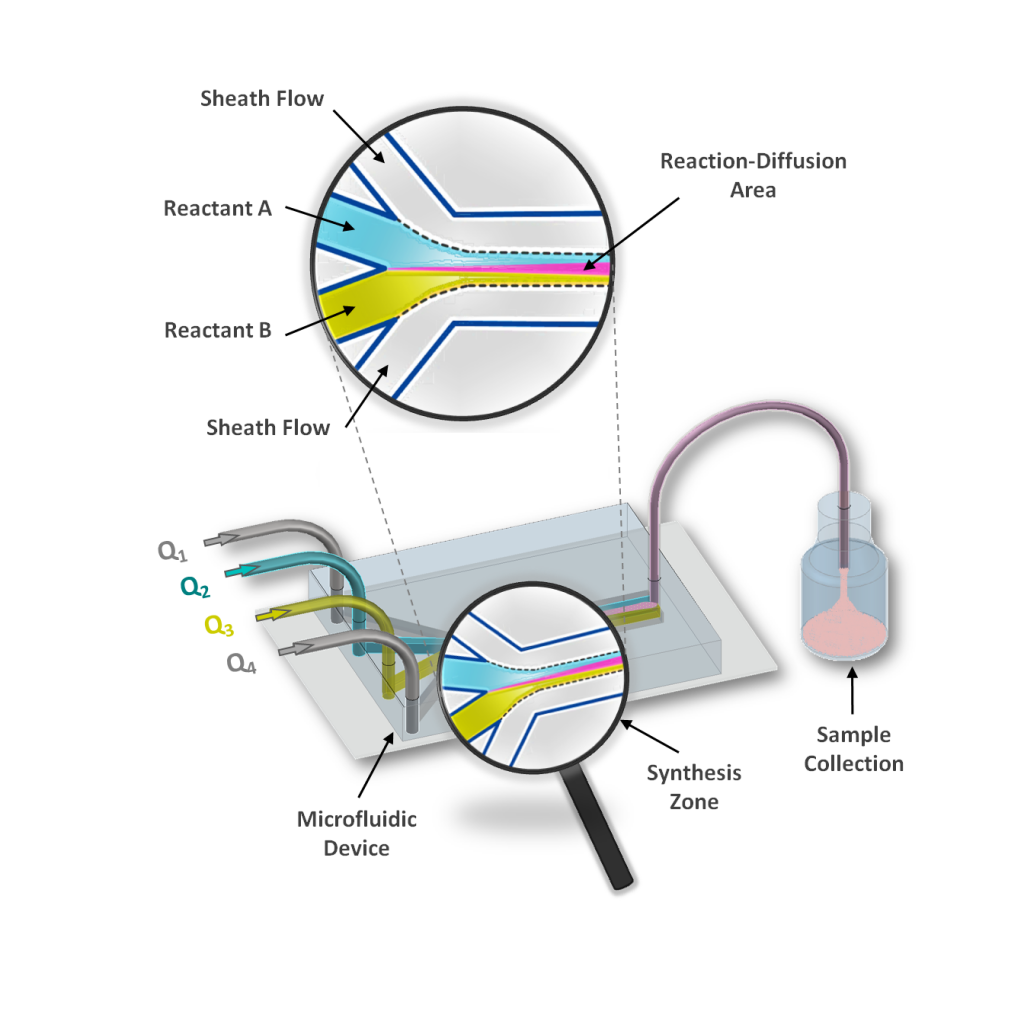
Afshin Abrishamkar,
ESPCI, now in Canada at McMaster University
My research is multidisciplinary at the intersections of chemical engineering, microfluidics, and material science. I focus on developing new microfluidic-assisted platforms to enable controlled synthesis of advanced materials, which are unachievable through conventional synthesis approaches. To broaden the scope of materials that can be produced, together with a team of collaborators we developed a novel microfluidic approach for material synthesis capable of accessing out-of-equilibrium conditions, leading to the first report of applying microfluidic technologies to facilitate the formation of novel and non-equilibrium structures of a crystalline material. Moreover, I also developed a continuous flow microfluidic platform for controlled synthesis of crystalline materials exhibiting metastability, which enables further practical and potential applications in e.g. sensors, memory devices, or electronic switches. In summary, the goal of my doctoral research was to develop microfluidic platforms where thermodynamic to kinetically controlled conditions can be easily achieved in a rationale fashion. These platforms may then be used to; i) control the synthesis of various materials, enabling the isolation of out-of-equilibrium structures, ii) uncover their self-assembly mechanisms, and iii) to process crystalline materials on surfaces.
https://www.jove.com/v/56020/microfluidic-based-synthesis-covalent-organic-frameworks-cofs-tool
https://www.jove.com/t/54193/microfluidic-pneumatic-cages-novel-approach-for-chip-crystal-trapping
• Interactions ondes/écoulements
Hugo Chesneau
LOMA, Univ Bordeaux
L’utilisation d’ondes électromagnétiques ou acoustiques permet de déformer et manipuler des interfaces fluides, respectivement, à des échelles microscopiques ou millimétriques. Si les effets de pression de radiation d’une onde électromagnérique ou mécanique sont maintenant bien connus, ceux-ci peuvent être radicalement différents suivant les milieux ou interfaces traversés. Lorsqu’une onde électromagnétique traverse un milieu diffusif, il est possible de générer des éoulements en volume, et ainsi déformer une interface fluide à travers les contraintes visqueuses résultantes. Dans le cas de milieu transparent, seule la pression de radiation à l’interface est présente. Dans ce cas, l’interface est toujours déformée du milieu dans lequel la célérité de l’onde est la plus faible vers celui où elle est la plus grande. Cependant, considérant le milieu d’incidence de l’onde ou la géométrie de l’interface, différents mécanismes de guidage se mettent en palce résultant en des morphologies liquides complexes. L’étude numérique de ces phénomènes permet d’avoir accès à des informations non observables expérimentalement, tel que l’écoulement produit dans des fluides turbides ou le champ d’intensité de l’onde se propageant dans la déformation.
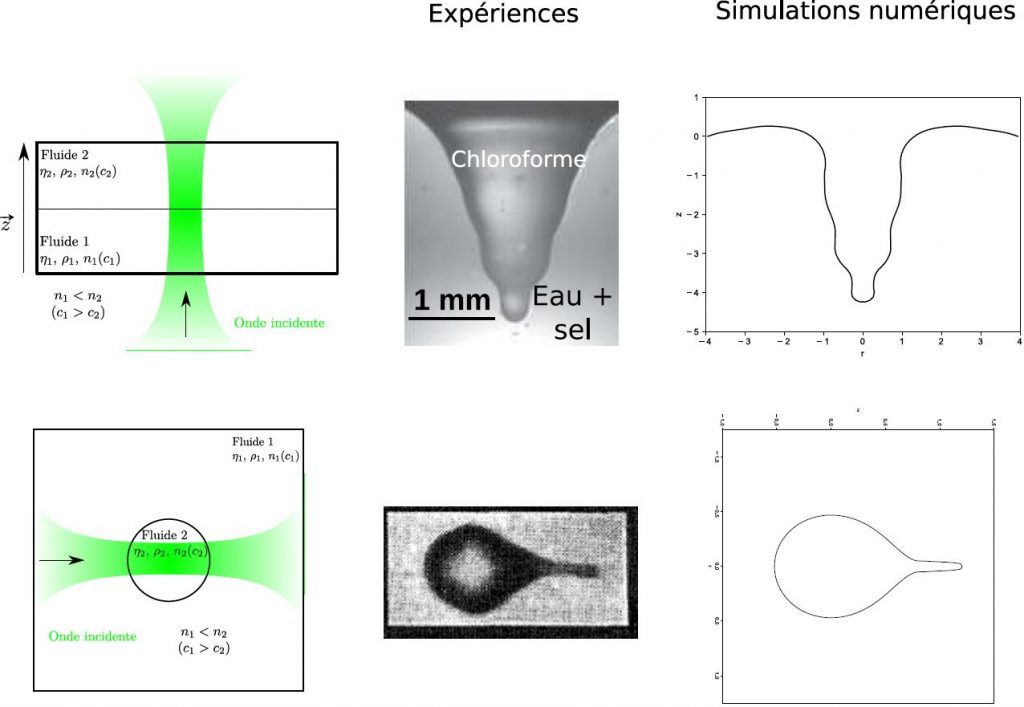
• Flow, heat and mass transfer at microscale
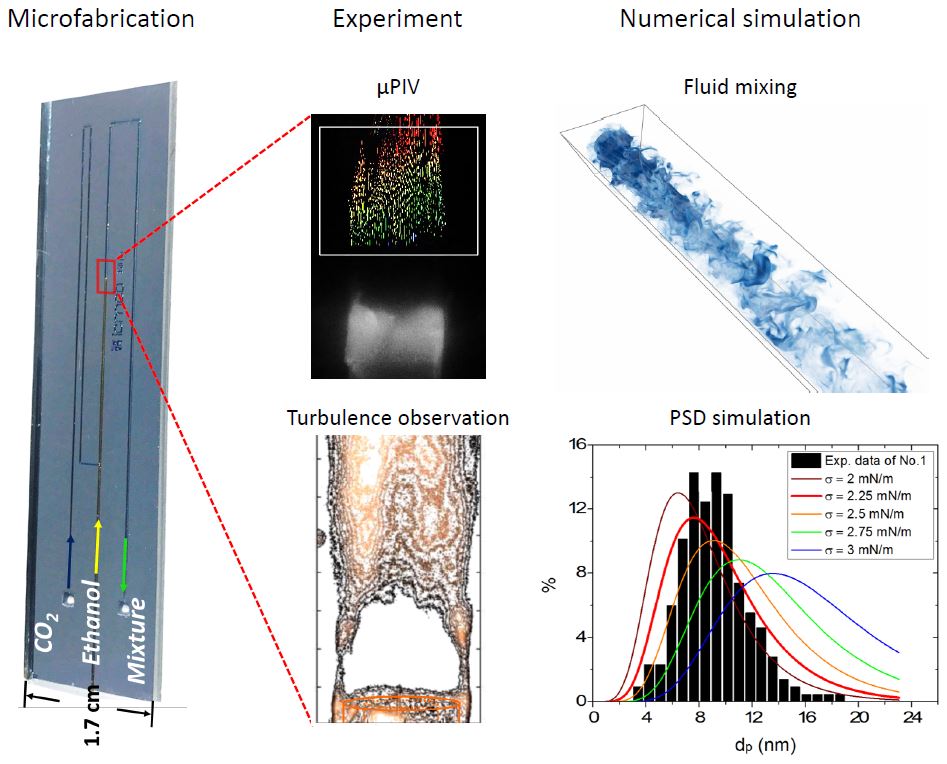
Fan Zhang,
ICMCB et I2M, Bordeaux
We study the thermo-hydrodynamic behavior of a mixture, a solvent
and a supercritical antisolvent (CO2) in a microfluidic chip, for conditions used in the Supercritical Antisolvent (SAS) process. This work is based on a complementary approach of both experiments and simulations. The objective of the thesis is to determine the favorable conditions for a fast mixture of species. The simulations are performed with the massively parallel
code Notus. The results of the numerical simulations have been compared to the experimental data obtained by micro-PIV in laminar flow conditions. They are in good agreement. After the validation of the
numerical code, the numerical tool is used to determine the optimal operating conditions of mixing. For
this, simulations of the mixture of two fluids (typically CO2 and ethanol) are performed for different operating conditions (velocity, temperature, pressure) for laminar conditions but also for turbulent conditions, a
regime rarely reached in microreactors. Indeed, we have shown experimentally that the turbulent mixing could be reached in the microchannel thanks to the « high pressure microfluidic » technology developed in our laboratory scale. The numerical results allow us to propose a reliable analysis of the mixture from both qualitative and quantitative point of view, proving that the mixing conditions in this type of device are particularly favorable for the material synthesis by supercritical antisolvent.


